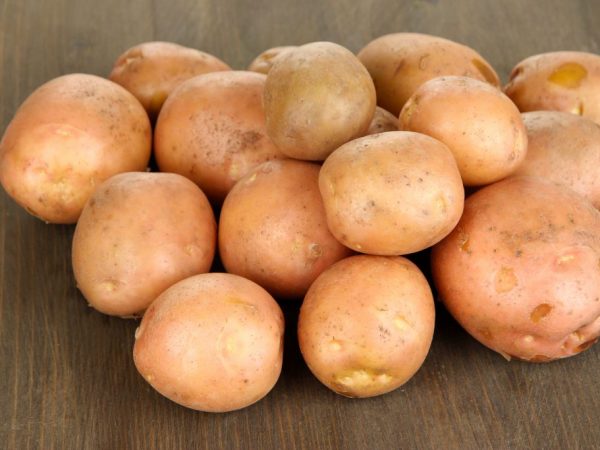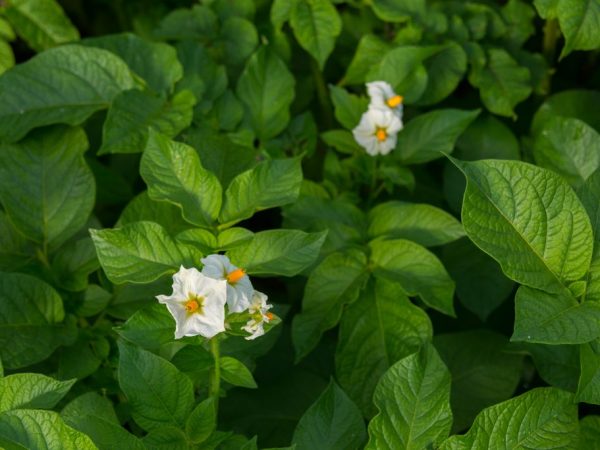Description of Cardinal potatoes
Cardinal potatoes are mainly grown by humans for home cooking. It is endowed with a large number of vitamins and minerals. With proper cultivation and care, it gives a large yield. It is immune to many diseases and parasites. Sudden changes in the weather are not afraid of him. The Cardinal potato variety is popular among gardeners and has only positive reviews.

Description of Cardinal potatoes
Description of the variety
The Cardinal potato variety was developed thanks to Dutch breeders. It is very popular all over the world. Able to give an excellent harvest in any region, as it tolerates drought well and can grow in areas with high moisture. Temperature drops, strong winds and frosts will not scare potatoes, they will also grow and develop well.
The characteristic of Cardinal potatoes is positive, it is often grown by gardeners. The variety is recorded for late ripening. The harvest is always big. On average, 300 centners of fruits are obtained from 1 hectare. In favorable fruitful years, it is possible to get 350 centners. The tubers have excellent keeping quality, so potatoes can be stored for 4-7 months in dark and cool places. The approximate storage temperature is 1-4 ° C.
Characteristics of potatoes
The description of the Cardinal potato is very interesting: the bush is tall, straight. It has many long, bright green leaves. Leaves are smooth with sharp ends. During flowering, corollas have a burgundy hue. The ripening period is quite long 110-120 days. That is why the fruits are of different shapes, from small to medium.
The shape of the potato is round, slightly elongated. The skin is smooth, flawless, smooth. The fruits of the variety are pink, the flesh is beige. Potatoes contain starch, from 14 to 16%. The potato has an excellent presentation, but mainly the variety is grown for personal use, and not for sale. Gardeners can start selling on their own, but large enterprises do not grow the Cardinal variety. Has a good taste and aroma. It is used to prepare various dishes. Many people like to cook fries and chips with potatoes.
Due to the small amount of starch, the potatoes are not boiled. Cardinal does not cause allergies and is perfect for juicing. The fruits have the ability to reduce acidity in the human body. In addition, it has anti-inflammatory properties. It is recommended to eat for people who have an ulcer, gastritis, duodenal disease and increased acidity. Potatoes are ideal for people suffering from many diseases.
Planting and growing rules
A full description of the potato suggests that this is the ideal variety for planting. But, there are a number of some rules that gardeners must necessarily follow. Potatoes are grown only outdoors. Planting begins in May. The landing pattern should have coordinates 35x70. It is also worth knowing that the more space you leave near the bushes, the greater the amount of harvest will be.
During planting according to the 40x90 scheme, the amount of the crop grows significantly, and if the gardener takes proper care of the plant, then the volume of fruits will increase several times. Tubers are planted to a depth of 8-10 cm. It must be remembered that tubers are planted after winter crops, lupine and flax. This applies specifically to this variety of potatoes. In addition, the soil is necessarily loosened, since the plant will not accept solid soil, and it simply will not develop. Weeds must be removed, as they can absorb all the useful elements of potatoes.
Plant care rules

The quantity of the crop depends on the quality of care.
Cardinal potatoes are characterized as unpretentious, but he will need a little attention. The quantity and quality of the crop depends on the correct and timely care. Below is a description of caring for potatoes.
- Loosening the soil around the bushes is carried out. This is done only 2 times: before germination and after.
- The first feeding is carried out with a hoe, when the plant reaches a height of 14-17 cm. The second feeding is done 2-3 weeks after the first.
- The holes where potatoes are planted must be carefully weeded out. The more often this happens, the better.
- If you notice the first wilting of the leaves, and the soil is also dry, the potatoes need to be watered urgently, and abundantly.
- If the weather conditions gave heavy precipitation and moistened the soil well, then fertilizer in the form of bird droppings can be added. It will also be useful to dilute the earth with mineral fertilizers in the form of wood ash. Basically, minerals are added immediately after dressing. It must be remembered that nitrogen fertilizers must be applied very carefully and only in the early stages of ripening. If nitrogen is added in the late period, it will increase the growth of tops, which will negatively affect the number and quality of the crop.
Possible diseases and pests
The variety is resistant to many diseases and parasites, as evidenced by its full characteristic. The plant does not lend itself to nematodes and potato crayfish. Medium resistance. If parasites attack, then only caterpillars. They can severely damage the stems of the plant and the tubers themselves. During maturation, caterpillars penetrate the stem and gnaw through small tunnels. Then they move on to fruits.
Such pests have the ability to cause the reproduction of negative microorganisms that produce rotting tubers. They severely spoil fruits that will not be suitable for consumption. To stop pests, plants are sprayed. For this, such chemicals as "Cymbush" and "Decis" are perfect. The variety can also be processed with folk remedies, for example, with a solution of potassium permanganate in order to avoid late blight diseases.
Conclusion
Cardinal potatoes are a table variety. Gardeners love it and grow it for themselves. It tastes great and is suitable for many dishes. In the process of growing, it does not take a lot of time and effort. But the rules of care significantly affect the quantity and quality of the harvested crop.
The description of the variety allows us to conclude that this is an excellent option for breeders, and a full-fledged characteristic will allow you not to make a mistake in your choice.

